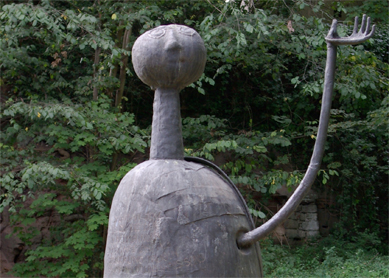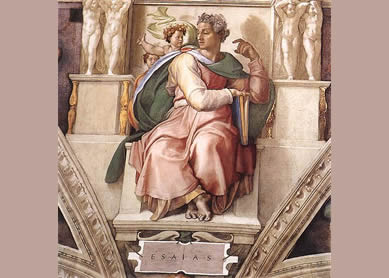Readers of the Bible used to think that because the events in the second half of the book of Isaiah were predictions, they were all written down by the prophet Isaiah many years in advance. However, closer examination of the texts suggests that the authorship of Isaiah is not so simple.
The book of Isaiah refers to historical events that are at least 200 years apart. In Isa 7, for instance, there is material about an invasion of Judah that we know took place in the 730s B.C.E., well before the Babylonian exile. Isa 45:1 refers to the Persian king Cyrus, looking forward to his capture of Babylon in 539 B.C.E., and the closing chapters of the book, such as Isa 60, contain descriptions of what look most like the situation of the return from the Babylonian exile during the period of Persian rule from 538 B.C.E. onwards. Many other passages can be closely related to these events even though they may not refer to them directly.
To begin to understand the authorship of Isaiah, it is helpful to ask not only what the author is predicting but also what the standpoint of the writer is. Beginning in Isa 40, it is clear that the writer is not talking about things 150 years into the future. He speaks as though he is right there with his readers or listeners. They give voice to their sense of spiritual depression and he looks forward to the imminent arrival of Cyrus as the one who will let them go back home to Jerusalem, where the temple will be rebuilt (see Isa 44:24-28, for instance).
Once we start to read the book along those lines—seeing that these things are happening in the present, not the future—it becomes clear that the same principle applies in many other places as well. Certainly it becomes difficult to think that the prophet Isaiah himself could have written all of Isa 1-39. We may assume that Isaiah wrote the passages where he refers to himself as “I” (for example in Isa 6 and Isa 8) and some of the prophetic poems (oracles) as well, but Isa 7, Isa 20, and Isa 36-39 are stories about him, much more like what we get in the books of Kings, indicating they were probably written by somebody else.
Beyond that, scholars’ opinions differ. The line of thought represented by Isa 24-27 seems to be typical of the way people thought and wrote much later on; for example, its presentation of the end of the present world order and its reference to the bodily resurrection of the dead (Isa 26:19) are two ideas that do not seem to have entered the thought world of the biblical writers until the postexilic period at the earliest. Isa 35, however, sounds just like the poems in Isa 40-55 (see especially Isa 35:10 and Isa 51:11), suggesting that these chapters come from the same period and perhaps even the same author.
The result of these differences of opinion means that it is difficult to give a precise answer to our question, “How many Isaiahs were there?” Some think that the easy answer is “three” (Isa 1-39, Isa 40-55, and Isa 56-66, these often being referred to as Proto-Isaiah, Deutero-Isaiah, and Trito-Isaiah), but it is not as simple as that. There seem to be many more contributors to this great book, and of course we must not forget the work of the ancient editors who compiled it. Isaiah is therefore like a tapestry, with many hands contributing to a greater unity.





